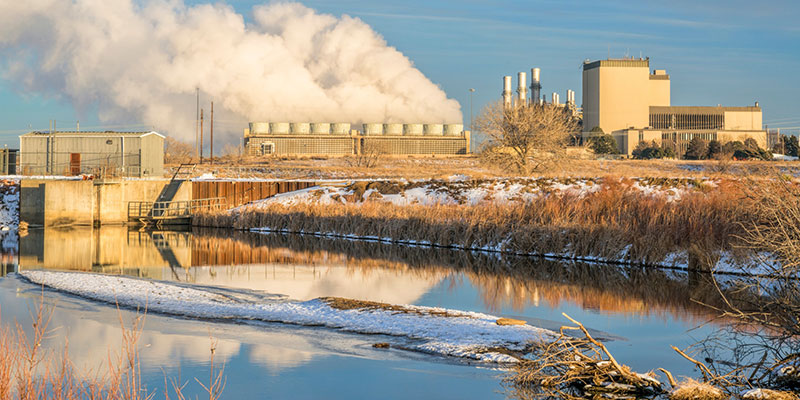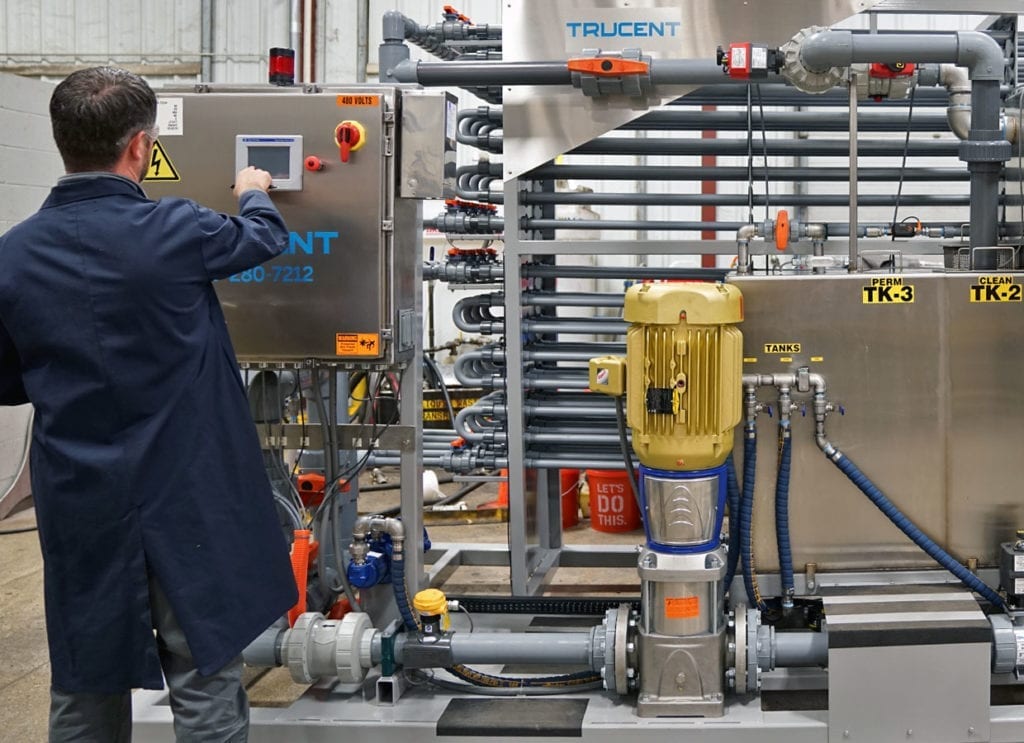Industrial Waste Water Treatment-- Eco-Friendly Solutions for Water Recycling
Industrial Waste Water Treatment-- Eco-Friendly Solutions for Water Recycling
Blog Article
Trick Techniques in Industrial Waste Water Therapy Procedures
The therapy of commercial wastewater is an essential element of ecological management, entailing an array of techniques designed to minimize the effect of pollutants. Developments in innovations such as membrane layer purification and progressed oxidation processes supply ingenious solutions for enhancing treatment efficiency.
Physical Treatment Techniques
How efficiently can physical treatment techniques address the complexities of commercial wastewater? Physical treatment approaches play a crucial role in the initial phases of wastewater monitoring, concentrating largely on the elimination of solids and huge particulates. Techniques such as purification, sedimentation, and flotation are essential for decreasing the focus of suspended solids, thereby improving the effectiveness of succeeding treatment procedures.
Sedimentation entails the gravitational settling of solids, permitting for the splitting up of much heavier materials from the wastewater. This approach is specifically reliable in making clear water prior to biological or chemical therapies.
Additionally, flotation techniques, which use air bubbles to raise suspended solids to the surface area for removal, work in dealing with wastewater with high concentrations of fats, oils, and oils. In general, physical treatment techniques offer as an essential first action in the thorough monitoring of industrial wastewater, making sure that the load on subsequent therapy phases is minimized and improving total therapy efficiency.
Chemical Treatment Methods
While physical therapy methods prepared for reliable wastewater monitoring, chemical treatment techniques are crucial for addressing the a lot more complex pollutants commonly located in commercial effluents. These approaches use different chemical agents to speed up, reduce the effects of, or oxidize hazardous compounds, guaranteeing a much more extensive removal of toxins.
One typical method is coagulation and flocculation, where chemical coagulants such as light weight aluminum sulfate or ferric chloride are added to promote the gathering of suspended fragments. This procedure boosts solid-liquid splitting up, reducing turbidity and improving water top quality. Furthermore, neutralization procedures are used to change the pH of wastewater, using acids or bases to reduce the effects of acidic or alkaline streams, respectively.
Oxidation-reduction responses play an essential role in derogatory natural contaminants and pathogens. Chemical oxidants like chlorine, hydrogen, or ozone peroxide are made use of to damage down complex organic substances, making them much less dangerous or a lot more naturally degradable. Moreover, progressed oxidation procedures (AOPs) integrate several oxidation techniques to improve pollutant removal effectiveness.
Biological Therapy Procedures
The effectiveness of wastewater treatment is dramatically boosted by biological therapy processes, which harness the natural metabolic activities of microbes to disintegrate raw material and eliminate contaminants. Industrial Waste Water Treatment. These processes largely include anaerobic and cardio food digestion, each tailored for specific types of wastewater
Aerobic treatment procedures use oxygen to support microbial growth, promoting the malfunction of organic contaminants into carbon dioxide and water. Common approaches include turned on sludge systems, where oygenation storage tanks help with the mixing of wastewater with bacteria, and flowing filters, which motivate biofilm development on media surface areas.
Conversely, anaerobic treatment processes take place in the lack of oxygen, utilizing anaerobic germs to disintegrate raw material, leading to biogas production, a renewable resource resource. Anaerobic digesters are frequently utilized in commercial setups for this function, efficiently reducing the quantity of sludge while creating beneficial biogas.
The selection of a biological therapy approach depends upon wastewater qualities, treatment goals, and regulatory standards. The assimilation of biological procedures in wastewater treatment not just enhances pollutant elimination effectiveness but likewise advertises sustainability by minimizing chemical usage and sustaining resource recuperation.
Advanced Oxidation Processes

Usual AOP methods consist of Fenton's photocatalysis, reagent, and ozonation. Fenton's reagent, a combination of hydrogen peroxide and ferrous iron, militarizes the formation of hydroxyl radicals, making it reliable for treating wastewater having phenolic compounds and other recalcitrant compounds. Ozonation utilizes ozone as an effective oxidant, with the ability of weakening a wide variety of organic toxins while at the same time decontaminating the effluent. Photocatalysis utilizes light-activated drivers, such as titanium dioxide, to enhance oxidation reactions and remove pollutants.
AOPs supply numerous benefits, consisting of lowered sludge manufacturing and the capacity to treat wastewater with high concentrations of organic contaminants. The application of AOPs requires cautious consideration of operational specifications and cost-effectiveness, making sure that these innovative methods are appropriately integrated into existing wastewater treatment systems.
Membrane Layer Filtration Technologies

Microfiltration works for getting rid of put on hold germs and solids, while ultrafiltration targets smaller sized natural particles and viruses. Nanofiltration connects the void in between ultrafiltration and reverse osmosis, efficiently eliminating organic compounds and divalent ions. Reverse osmosis offers the greatest level of filtration, used mainly for desalination and removing mono-valent ions.
Membrane layer technologies use numerous benefits, consisting of reduced energy consumption contrasted to traditional treatment methods, modular design for scalability, and the potential for water recovery and reuse. Challenges such as membrane layer fouling and the need for normal maintenance should be addressed to make sure system effectiveness. Generally, membrane layer filtration innovations represent an important part of contemporary commercial wastewater treatment methods, promoting sustainability and source preservation in water administration.
Conclusion
In final thought, industrial wastewater therapy employs a varied variety of techniques, consisting of physical, chemical, biological, and progressed methods. Proceeded innovations in these approaches will even more improve the effectiveness and efficiency of see this wastewater treatment processes in industrial settings.
The therapy of commercial wastewater is a vital aspect of environmental administration, entailing an array of strategies created to minimize the influence of impurities.How properly can physical treatment approaches attend to the intricacies of commercial wastewater?Advanced oxidation procedures (AOPs) represent a cutting-edge approach in industrial wastewater treatment, designed to effectively degrade organic toxins that are frequently resistant to conventional therapy techniques (Industrial Waste Water Treatment).In conclusion, industrial wastewater treatment uses a diverse range of strategies, including physical, chemical, organic, and progressed methods. Proceeded developments in these techniques will certainly even more boost the effectiveness and efficiency of wastewater treatment processes in industrial settings
Report this page